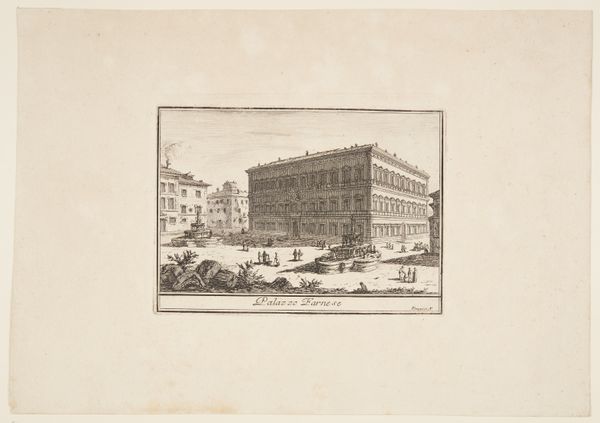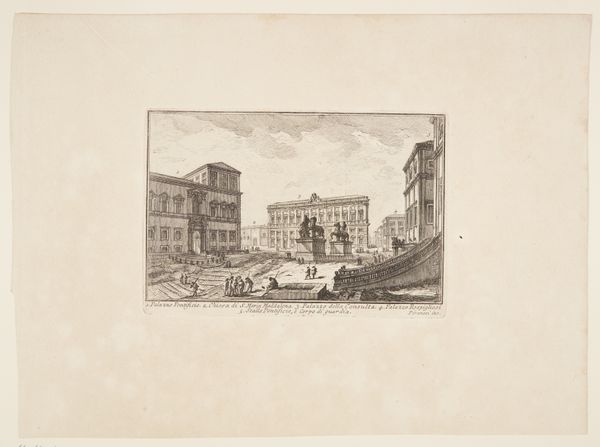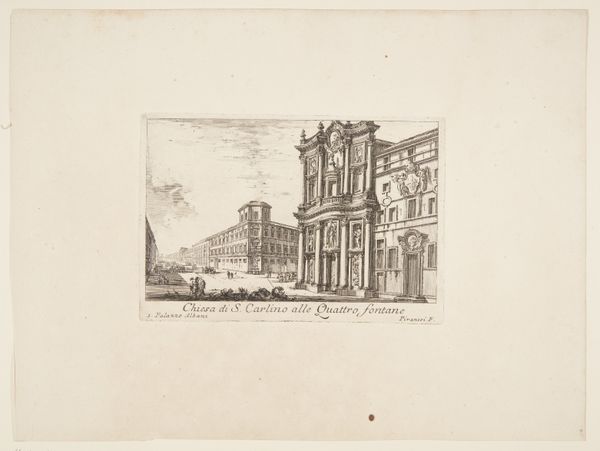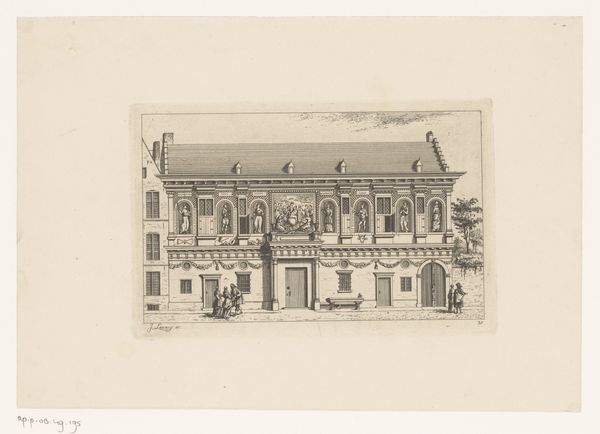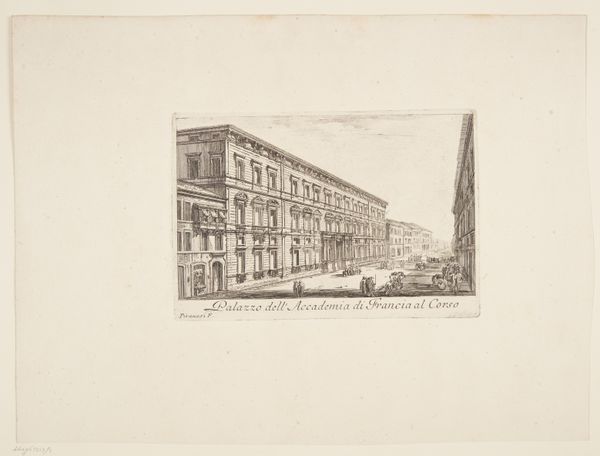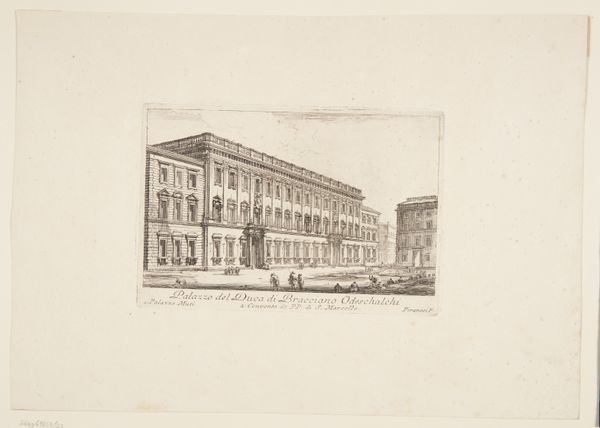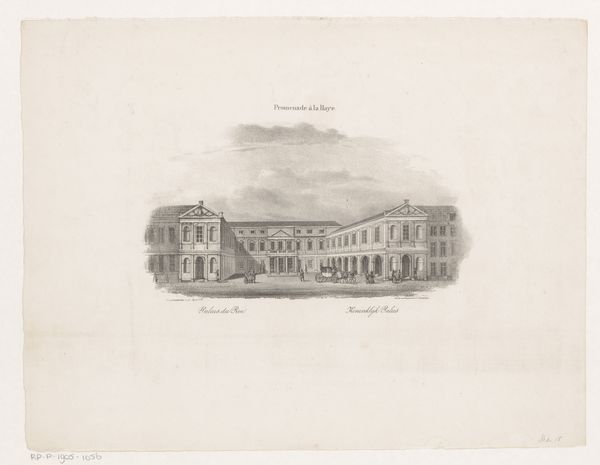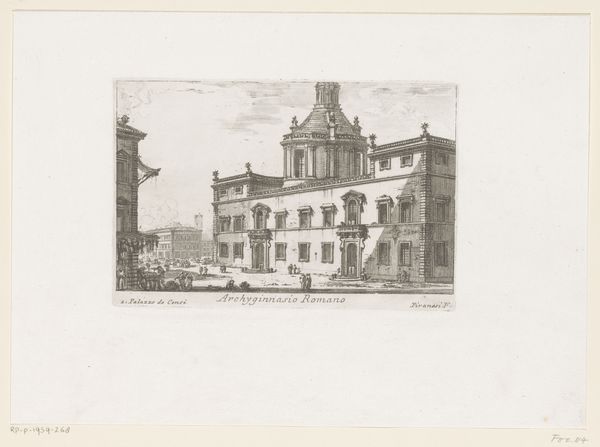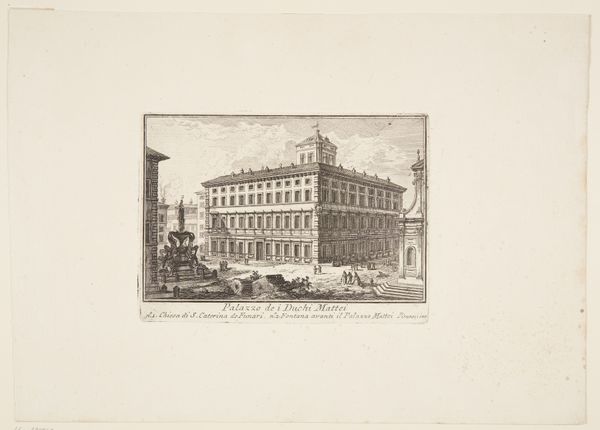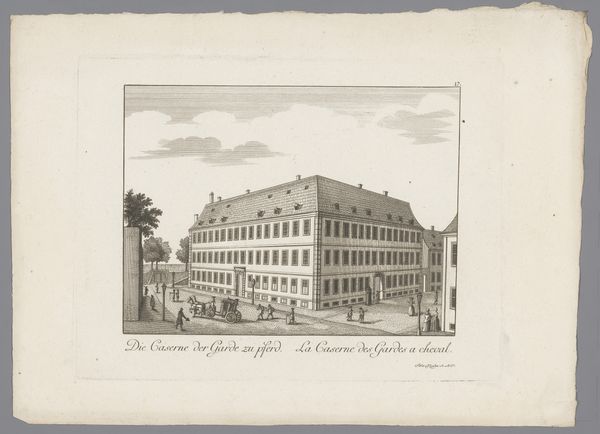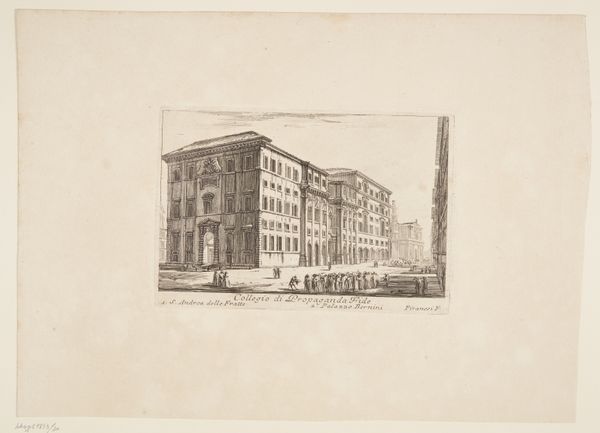
print, etching, engraving, architecture
#
baroque
# print
#
etching
#
etching
#
cityscape
#
engraving
#
architecture
Dimensions: 110 mm (height) x 176 mm (width) (plademaal)
This etching of the Palazzo Barberini was made by Giovanni Battista Piranesi, an Italian artist known for his depictions of Roman architecture. Piranesi created this image in the 18th century, a time when Rome was a popular destination for wealthy Europeans on the Grand Tour. These travelers sought to experience the art and culture of classical antiquity and the Renaissance, but also bought artworks like this one to bring home. Piranesi's prints thus played a crucial role in shaping the perception and appreciation of Roman architecture, both for his contemporaries and for subsequent generations. They were souvenirs but also functioned as documents of existing architecture. The Palazzo Barberini itself is a symbol of wealth and power, commissioned by one of Rome's most influential families. The image performs a kind of social function, too, because by depicting the palace, Piranesi's work invites us to reflect on the relationship between architecture, power, and the representation of culture. To understand the work of Piranesi better, scholars consult a wide range of sources, from architectural treatises to social histories of 18th-century Rome. This helps us appreciate the complex interplay between art, society, and the institutions that shape our understanding of the world.
Comments
No comments
Be the first to comment and join the conversation on the ultimate creative platform.
